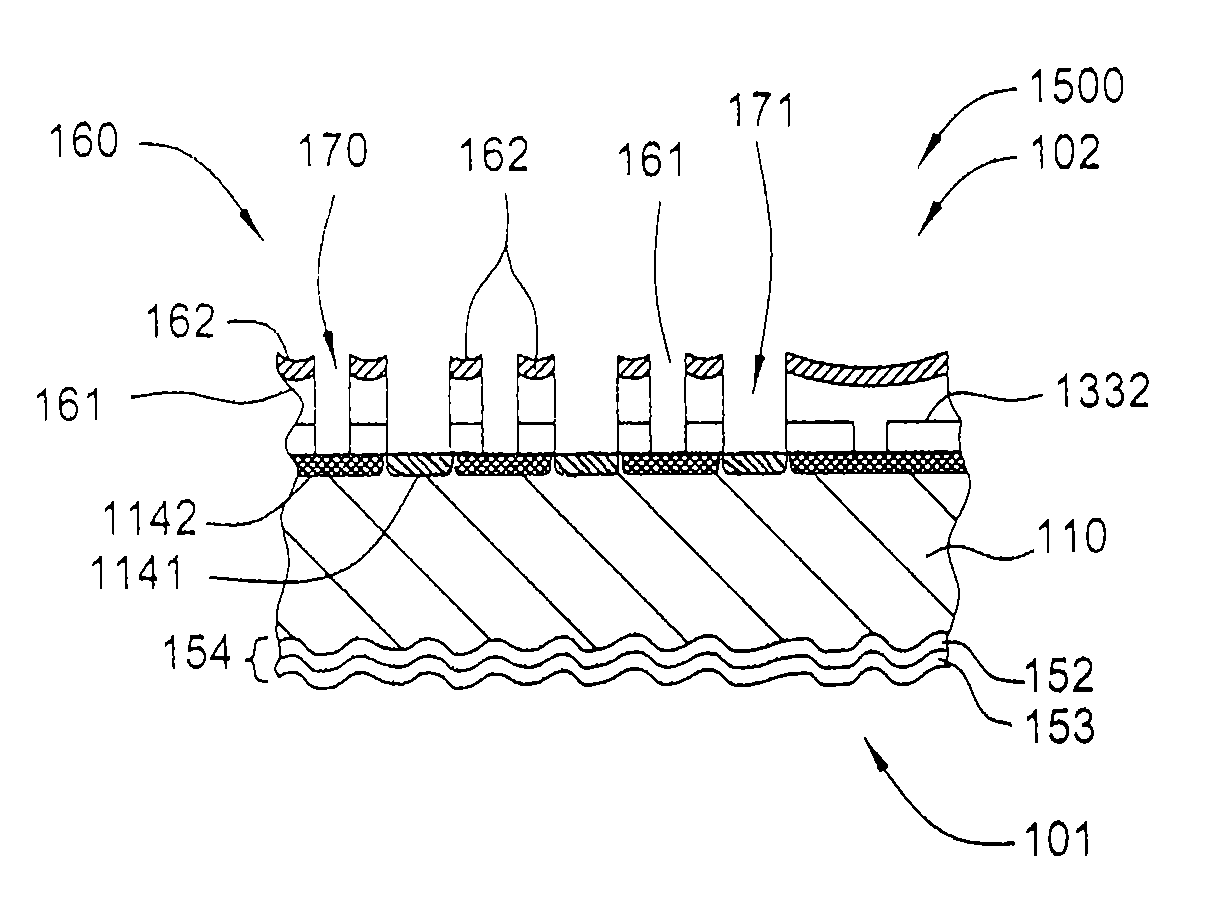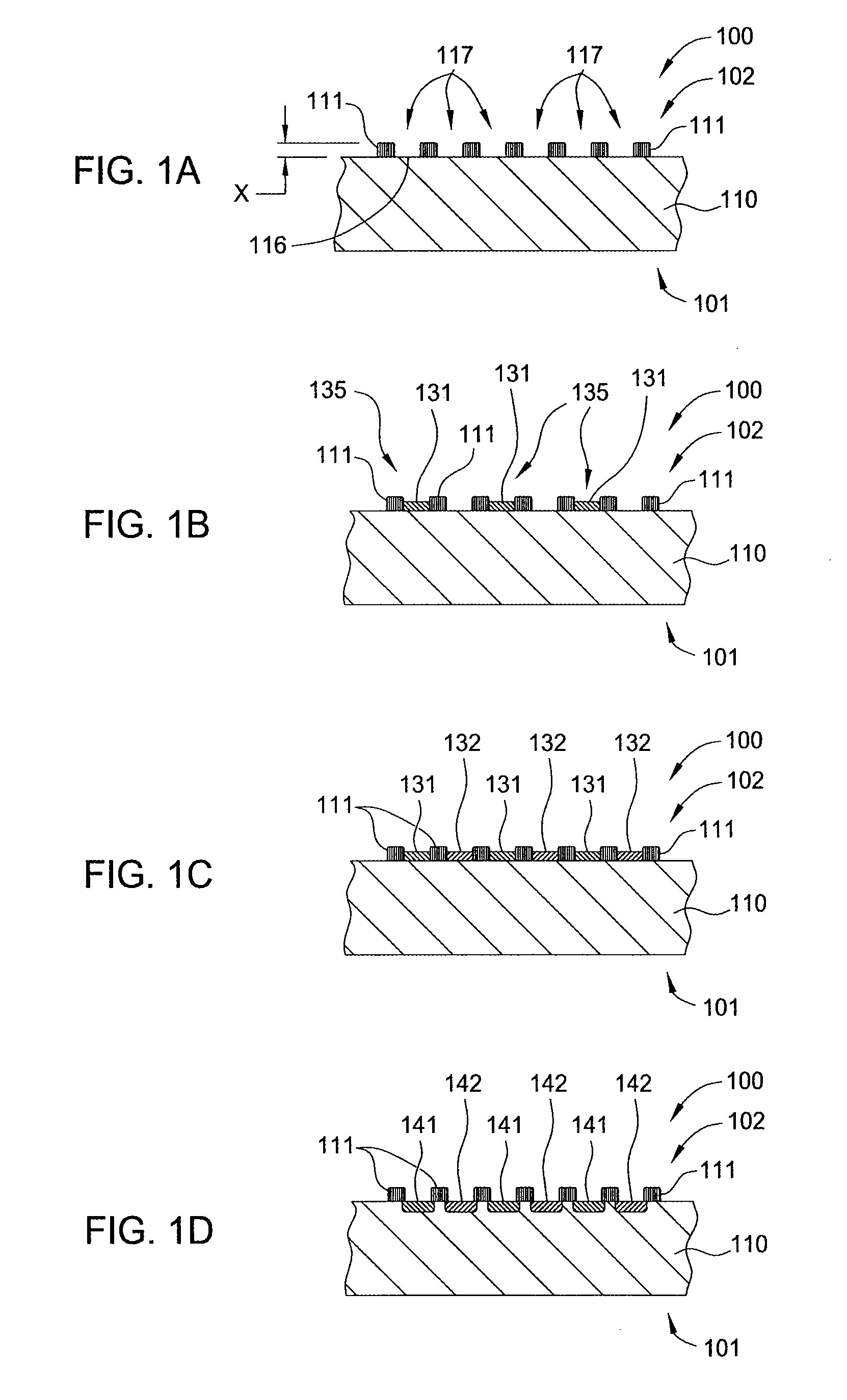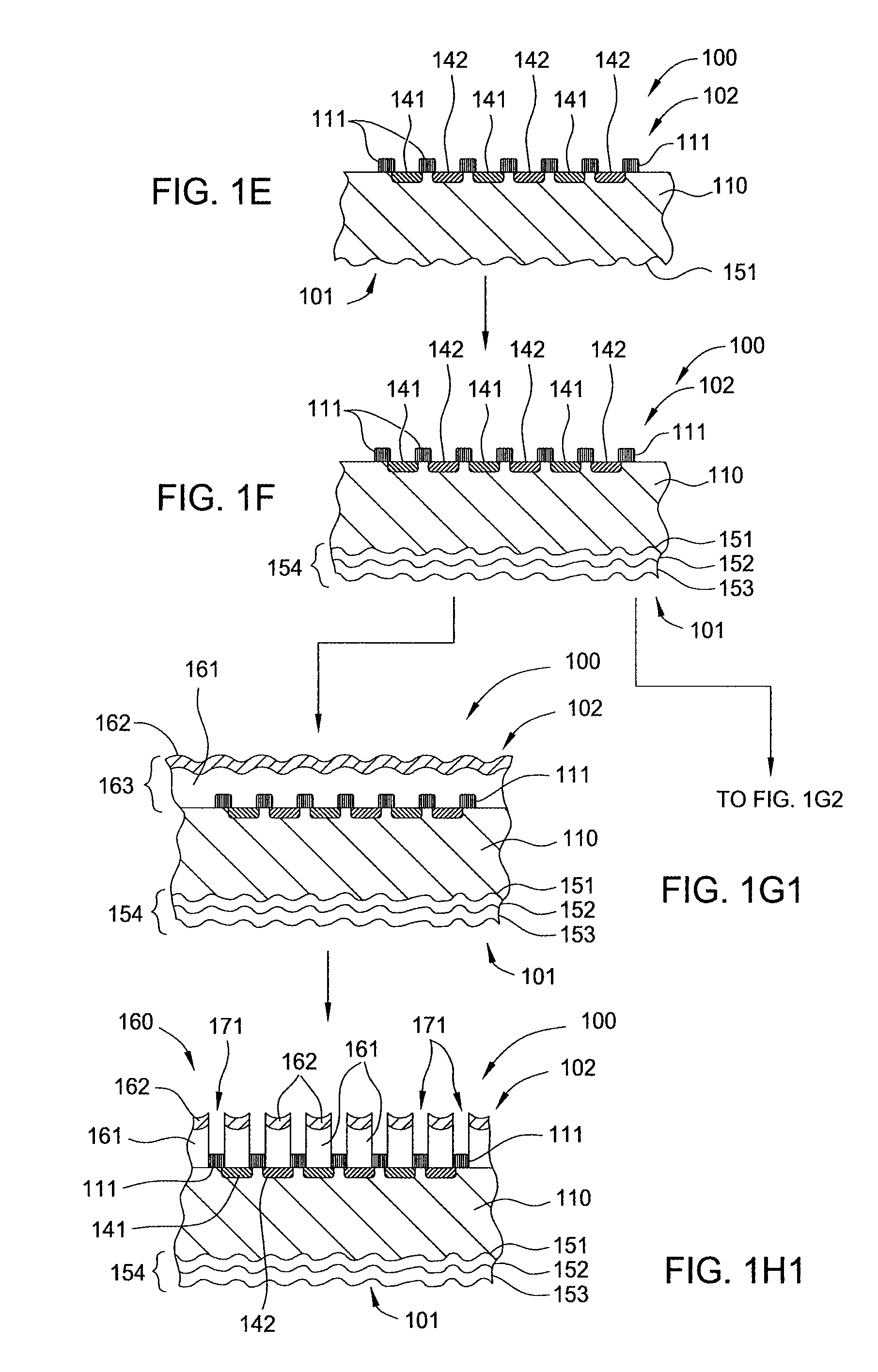Back contact solar cells using printed dielectric barrier
a dielectric barrier and solar cell technology, applied in the field of photovoltaic cell fabrication, can solve the problems of prior manufacturing methods and add to the cost of solar cell completion
- Summary
- Abstract
- Description
- Claims
- Application Information
AI Technical Summary
Benefits of technology
Problems solved by technology
Method used
Image
Examples
Embodiment Construction
[0041]Embodiments of the invention contemplate the formation of a high efficiency solar cell using novel methods to form the active region(s) and the metal contact structure of a solar cell device. In one embodiment, the methods include depositing a patterned dielectric material that is used to define the active regions and / or contact structure of a solar cell device. Various techniques may be used to form the active regions of the solar cell and the metal contact structure. Solar cell substrates (e.g., substrate 110 in FIG. 1A) that may benefit from the invention include substrates that may have an active region that contains organic material, single crystal silicon, multi-crystalline silicon, polycrystalline silicon, germanium (Ge), gallium arsenide (GaAs), cadmium telluride (CdTe), cadmium sulfide (CdS), copper indium gallium selenide (CIGS), copper indium selenide (CuInSe2), gallium indium phosphide (GaInP2), as well as heterojunction cells, such as GaInP / GaAs / Ge or ZnSe / GaAs / Ge...
PUM
| Property | Measurement | Unit |
|---|---|---|
| temperatures | aaaaa | aaaaa |
| temperatures | aaaaa | aaaaa |
| temperatures | aaaaa | aaaaa |
Abstract
Description
Claims
Application Information
 Login to View More
Login to View More - R&D
- Intellectual Property
- Life Sciences
- Materials
- Tech Scout
- Unparalleled Data Quality
- Higher Quality Content
- 60% Fewer Hallucinations
Browse by: Latest US Patents, China's latest patents, Technical Efficacy Thesaurus, Application Domain, Technology Topic, Popular Technical Reports.
© 2025 PatSnap. All rights reserved.Legal|Privacy policy|Modern Slavery Act Transparency Statement|Sitemap|About US| Contact US: help@patsnap.com



